The True Story of the Integration of Shaker Heights
Race has played a major role in shaping the ‘Suburban Dream’
Birdseye view of Shaker Heights.
The story of the integration of Shaker Heights is a tale well-entrenched in Cleveland history. Almost everyone who lives in Shaker has a vague idea of what happened. The myth goes like this: First we were segregated, and then people came together and made a dedicated effort to integrate throughout the 1980s and ’90s. Now, the whole suburb is integrated, and although there are some conflicts regarding race, Shaker is overall an inspiring example to the nation.
But how true is this story, exactly? Most of The Shaker Historical Society’s records on integration are not available online, so finding primary sources related to integration mid-pandemic is difficult. If one searches “integration” on the society’s website, only one link comes up: a 1999 University of Minnesota dissertation of nearly 300 pages that documents the history of Shaker integration.
The dissertation, by Dr. Cynthia Mills Richter, is titled “Integrating the Suburban Dream: Shaker Heights, Ohio” and tells a story spanning centuries. It includes quotes from audio recordings of activists, excerpts of articles and references to books.
According to Richter’s work, the story of integration began two centuries ago. “Residents of Shaker Heights have aspired to create an ideal community since the 1820s when a Shaker community developed on this site,” she wrote.
At first, Shaker Heights comprised members of The United Society of Believers in Christ’s Second Appearing, more commonly known as “The Shakers.” A Christian sect founded circa 1747, they believed in the public ownership of land and equality between men and women. They were also against marriage and sex, and very few are alive today as a result.
Decades later, two wealthy brothers named Oris Paxton and Mantis James Van Sweringen began buying land in Shaker Heights. Throughout the early 19th century, they developed their land into a planned community. Their supposedly utopian plan excluded Black, Catholic and Jewish people.
The Van Sweringen Company emphasized its ideals through a series of ads in an old newspaper called the Cleveland Topics. “On every family’s horizon is a rainbow,” read one ad, “and for many the pot of gold at the rainbow’s end is Shaker Village.”
The ads were nestled among articles on golf and polo, opera and art, bridge, antiques and wedding announcements. The Cleveland Topics catered to wealthy and aspiring middle-class readers — precisely the sort of people who were buying suburban homes in record numbers in the 1920s.
However, race truly became a factor in Shaker’s history when the Great Migration began. The Great Migration, spanning the entire 20th century, refers to the mass-migration of 6 million Black southern Americans from the south to the north of the United States. “The Great Migration had a dramatic effect on Cleveland,” Richter wrote. “In the ten years between 1910 and 1920, the African American population of Cleveland increased 308 percent.”
The dissertation cited The Cleveland Advocate, a Black newspaper, which reported on the migration in 1917. “It is a REGULAR EXODUS. It is without head, tail, or leadership,” the paper published.
Before the Great Migration, Cleveland had been known for its progressive history of abolitionism, civil rights work, lack of residential segregation and integration of public schools. However, historian Kenneth L. Kusmer dates the sharp increase in racial tension and institutional discrimination in Cleveland to 1915 because of the Great Migration.
White Clevelanders, particularly those in suburbs such as Shaker Heights, were alarmed by the Great Migration. For example, in 1925 an editorial was published in the Cleveland Topics. “Cleveland’s colored population has increased from 8,500 to 50,000 in the past ten years. More are on the way. Cleveland’s colored population in the old, regular, well ordered days affords absolutely no key to or suggestion of the nature of this new population or of the problem it presents. . . It is the serious problem of a vast accretion of new and totally different people of an opposite race…These southern negroes are not welcome here. Please do not delude yourself, or delude them,” the author wrote.
As a result of this racial tension, Clevelanders gradually began to segregate. “We can see increasing concentration of African Americans in certain areas of the city resulting in a crisis-level housing shortage, dramatically inflated rents, and deteriorating housing conditions in this section,” Richter wrote.
Richter included the words of poet Langston Hughes, who moved to Cleveland in the early 1920s: “We always lived, during my high school years, either in an attic or basement, and paid quite a lot for such inconvenient quarters. White people on the east side of the city were moving out of their frame houses and renting them to Negroes at double and triple the rents they could receive from others. An eight-room house with one bath would be cut up into apartments and five or six families crowded into it, each two-room kitchenette apartment renting for what the whole house had rented for before.”
By 1930, approximately 1,200 Black domestic servants lived and worked for white employers in Shaker. Some of these servants’ children were even allowed to attend Shaker schools. But Shaker Heights was largely too expensive and hostile for Black homeowners. Richter quoted an observer who said, “It is about as difficult for a negro to buy property in the Heights … as it is for the traditional camel to pass through the traditional needle.”
Despite the obstacles, one Black physician, Dr. E.A. Bailey, purchased a house in Shaker Heights in 1925. “Dr. Bailey reported that shortly after occupying the home, bricks were thrown and shots were fired at his home and an attempt was made to set fire to his garage,” Russell H. Davis, a historian of Cleveland’s Black community, wrote in his book Black Americans in Cleveland. Bailey appealed for police protection, but the police searched all visitors to his home after Bailey’s chauffeur fired a shot at suspected disturbers. After failing to obtain a court injunction against police harassment, he moved.
The presence of the Bailey family pushed 400 property owners in Shaker Heights to form the Committee of the Shaker Heights Protective Association in October 1925. Working alongside the Van Sweringen company, the landowners created a series of laws that heavily restricted property sales to Black buyers in Shaker Heights. These laws, common throughout the United States, would define Shaker Heights for decades to come.
Richter’s study notes that Shaker remained segregated for the next 23 years. But in 1948, the U.S. Supreme Court struck down deed restrictions like the ones used to segregate Shaker in the case Shelley v. Kraemer. Because of this ruling, more wealthy Black professionals began to move into Shaker Heights.
“During the 1950s in Cleveland and in other cities across the nation, Black professionals, whose income permitted them to move, but whose race had restricted them to certain over-priced and deteriorating neighborhoods in the central city, began to buy homes in previously all-White, middle-class neighborhoods,” Richter wrote. “Shaker Heights was the first suburb that was directly in the path of racial change.”
Bernard Isaacs, former president of the Ludlow Community Association, spoke to Richter about his experience at the beginning of the new era of segregation in Shaker. “In the early 1950’s, Black families settled in the Ludlow School area of Shaker,” he said. “Ludlow also served families on some streets that were inside Cleveland’s boundaries. The children who lived in that Cleveland enclave were white.”
According to Isaacs, though, public attention was not focused on Black families until a bomb exploded at the site of a home being built on Corby Road, near Ludlow School. The buyers of the home were a Black couple named John and Dorothy Pegg.
“When the bomb went off at the Peggs’, I had been a mildly interested owner living near the other end of the Ludlow area. But as parents of youngsters in the Ludlow School, my wife, Mimi, and I soon joined the Ludlow effort,” Isaacs told Richter.
Isaacs said that the issue was not attracting Black homebuyers, but preventing white flight. “We were bluntly advised by experts that Ludlow was trying to make water run uphill. White and black families living side by side, becoming close friends, their kids playing together and going to school together – it just wouldn’t work! The white residents would all sell to blacks, and blacks would overrun the area,” he said.
Richter wrote that the Ludlow Community Association had to actively combat the racist practices. “The real estate industry and the banking institutions exacerbated the rapid racial change by steering prospective White residents away from the neighborhood,” she wrote. “White realtors stopped showing houses in this neighborhood to White buyers, and banks stopped giving mortgages to prospective White homebuyers. Those Whites who did purchase homes in the area had difficulty obtaining financing because of the changing racial character of the community.”
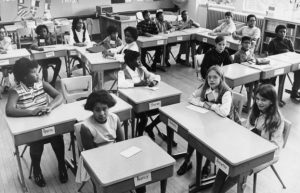
William Sanborn described his experience when he sought to purchase a home in Ludlow in 1961 to Lee Burton, a reporter for the Wall Street Journal. “A friend of mine at a savings and loan association tried to dissuade me from moving into this ‘trouble’ area and I really had to pull some strings to get the loan,” he said.
Attorney Joseph Finley also moved to Ludlow at the height of this rapid racial change. “One lending agency representative told me that I would be a fool, and he used that word, if I bought a home in the Ludlow area,” he said in an article published by the Sun Press in 1960.
The response, Isaacs said, was to establish a program to attract new white home buyers to Ludlow while encouraging new Black buyers to settle in other parts of Shaker Heights or in other eastern suburbs.
In the Lomond neighborhood, Richter stated, every effort was to convince white purchasers of the dream of an integrated suburb. “The community associations sent letters promoting the integrated communities to professionals moving to Cleveland,” she wrote.
Lomond resident Marc Swartzbaugh spoke to Richter about his memory of these efforts. “We sent letters to everybody that we knew,” he said. “My law firm was a good source. We had a number of people move into Lomond. Every time that we would hire somebody, they would get a packet from the Lomond Association. We solicited doctors that way, who came to the Cleveland Clinic and Case Western.”
This, however, is where fact deviates from myth. Richter writes that the efforts for integration were not “a proactive effort by an all-White suburb to seek out Black residents,” as many believe. It was “a reaction to the movement of African American homeowners into the community and the perceived threat of rapid resegregation, declining property values, and inadequate city services that both Black and White residents had witnessed in numerous Cleveland neighborhoods as African Americans moved in.” It was damage control.
This method of constantly recruiting white families to move into Shaker was actually extremely controversial because it was white people, not Black people, who faced discrimination from banks when trying to receive loans to move into Shaker. “In order to achieve the desired end—to prevent resegregation and maintain a racially integrated community,” Richter wrote, “Ludlow residents justified employing means that targeted and gave a financial advantage to one group: Whites.”
Black residents struggled with this white-focused definition of discrimination. “It’s awfully hard to justify helping whites move in,” Mrs. Joseph Battle said in an interview with Dayton Daily News in October 1968. “Normally, we think of whites being able to do anything they want to,” she said.
Richter described heated community meetings. She wrote that some Black residents questioned the whole premise upon which the company was to be established. Some even suggested forming their own company to help Black families.
And yet others agreed that the ends justified the means. “Many who opposed the Company, would be the first to move if the community became all-Negro,” said George Grant, a Cleveland school principal who moved to Ludlow in 1962 from an Black neighborhood in Cleveland to the Dayton Daily News. “At one time, I too felt it was just another way of segregating. But the more you become involved, you find the Ludlow Association is attempting to perpetuate true integration.”
Grant also said he feared the consequences of a failed integration. “If Ludlow becomes all black, then we’re back in the ghetto again. We’ll lose our excellent services,” he said.
“As long as whites live here, too, I know my garbage will be collected,” the wife of Black Realtor Joseph Battle said to the Dayton Daily News.
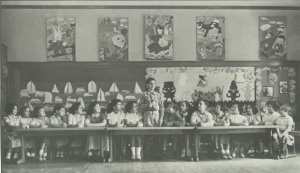
In many areas of Shaker Heights, integration was fairly successful. Ludlow and Lomond remained diverse. However, the definition of “success” was turned on its head when it came to the Moreland district.
According to Richter, The Moreland Community Association used the same method as the Ludlow Community Association to remain integrated, but by the end of the 1960s, the area essentially resegregated as a Black community.
Moreland was an issue not just because it was now a segregated Black community, but because it challenged the narrative of success being spread about the rest of Shaker. “As long as you had this area where there had been complete racial turnover, if you didn’t reintegrate that, it sort of stood as an image of failure, and those who wanted to point to it would say, ‘Moreland today, and all of Shaker Heights tomorrow,’ ” Carolyn Milter, a white Ludlow community resident said to Richter.
Lucille Anderson, former head of the city’s housing office, expressed ambivalent feelings about the Moreland integration efforts. “You know, we didn’t do terribly, but we didn’t do well. How could we? You can’t do it if you don’t have the material to work with,” she said to Richter. But the definition of “doing well” varied across Shaker. To Ludlow residents and integration champions, “doing well” meant attracting new white residents to the community. To them, Moreland was a problem.
Moreland residents’ definition of success was notably different from Ludlow’s. To them, “success” meant a strong community with a good school, not the racial balance of the community. “Their position was far more advanced than ours,” Alan Gressel, a leader in the Ludlow housing program and the organization of the city’s Housing Office said to Richter. “Theirs was, ‘Just because we’re in a 90 percent black neighborhood doesn’t mean we should panic, we should leave, or we shouldn’t have good schools.’ ”
Moreland’s goal was no longer integration, but Black excellence. “Moreland residents questioned the argument that the end justified the means, and focused directly on the desired goal of the suburban dream, asserting that Moreland could be a success, even as a resegregated African American community,” Richter wrote.
By 1979, the Moreland community became a strong voice in the Shaker community. Their goal was no longer to attract white residents but to force the community to see them as equals.
Ava Moore, president of the Moreland Association, emphasized this in a letter to the editor of the Sun Press. “Moreland Community Association has other concerns to work on other than housing. Community awareness is our top priority at this point… Because we are a mostly black community, we work hard to keep from being written off by the city,” she said.
This position was controversial even among Black residents outside of Moreland. Winston Richie, a Black Ludlow resident, said to Richter that for the children it was particularly important. “I think blacks don’t do justice to their kids if they confine them to black neighborhoods. I facetiously say sometimes that I wanted my kids to know some dumb white kids, that there were some dumb white kids in this world. I wanted them to go to school with whites so that they could compete at college, in the corporate level, or wherever else they wanted to go,” he said. “I’ve seen blacks at Dartmouth that couldn’t make it through the first year because they just felt totally out of place.”
Since the initial integration, Shaker Heights has changed drastically. The people of Shaker Heights dress, speak and think differently. Schools have been opened and closed. Children have been bused across the district, hoping that someday they will appreciate one another in a way our parents never did. Shaker still struggles to detrack, to desegregate and to decolonize itself. Shaker marches against police brutality and grapples with the divide in its schools. But in times like these, it is all the more important to look at history. It is important to reflect on the conflicting ideologies of this suburb to find a path forward.
A version of this article appears in print on pages 6-11 of Volume 91, Issue I, published May 28, 2021.

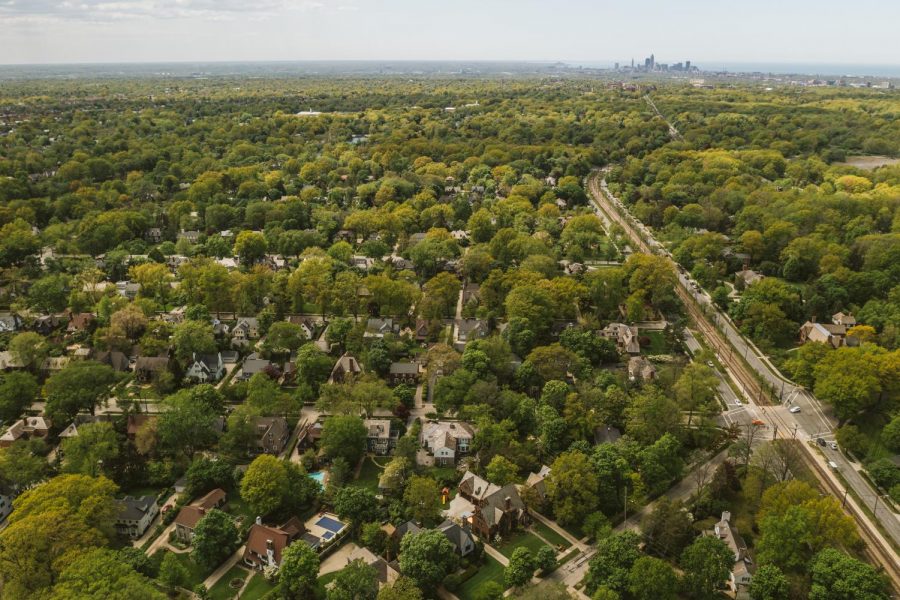

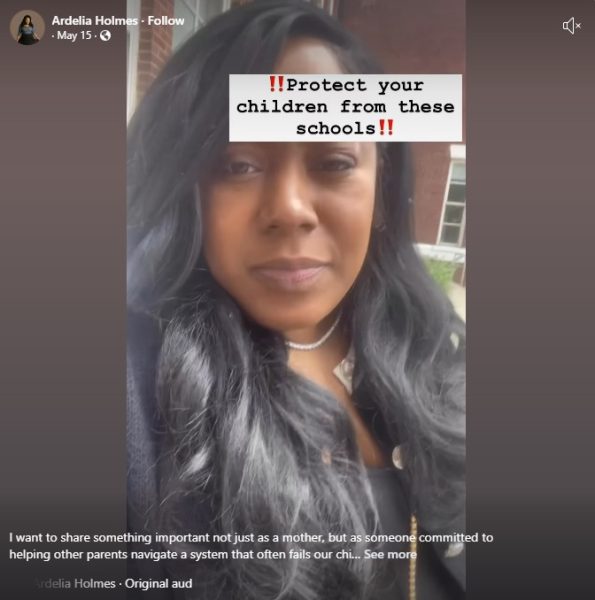

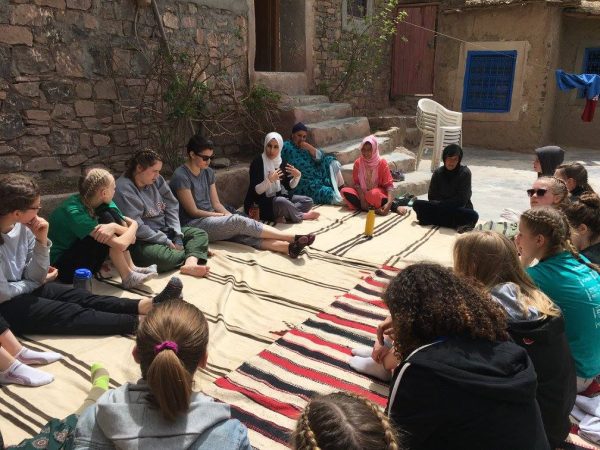
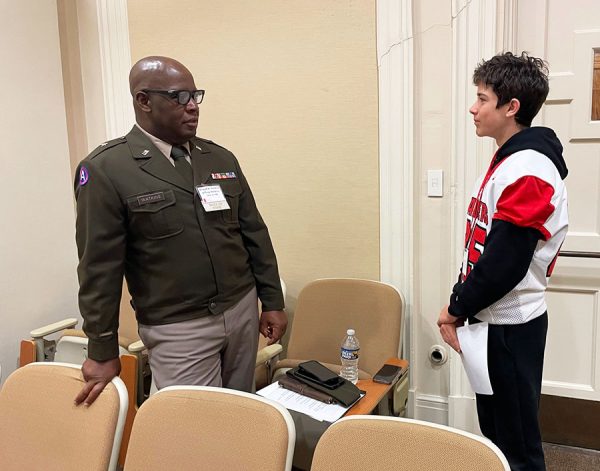


Liz | May 21, 2024 at 7:17 am
Anyone interested in this topic should read Dream Town by Laura Meckler.
LaSandra Akesson | Dec 21, 2022 at 4:53 am
As a resident in a nearby community in the 70’s you definitely didn’t feel welcomed to linger or esteem ownership in Shaker Heights. I own there now as an African American, and I can say I see more diversity there now than I ever imagined possible. The intent is there, the effort as well. Long reaching roots and mindsets may need more pruning, but it is definitely going in the right direction.
Regina Moore-cook | Oct 17, 2022 at 6:32 am
Shaker Heights was where I had my best memories of visiting my Beloved Grandfather and Grandmother my mother would let me spend my summers with them I would attend church services with my Beloved Grandfather and father every Sunday at a very young age i loved watching and listening to my Grandfather and Father Sing the Gospel 🎶 once I got older i continued to visit I enjoy grilling kabobs and Cleaning fresh fish for fish fry
There were times I would entertain myself in the Basement behind their bar 🍸with fake drinks while playing LP’s like (That’s the sound of the man working on the chain gang) Those were the Best Days.